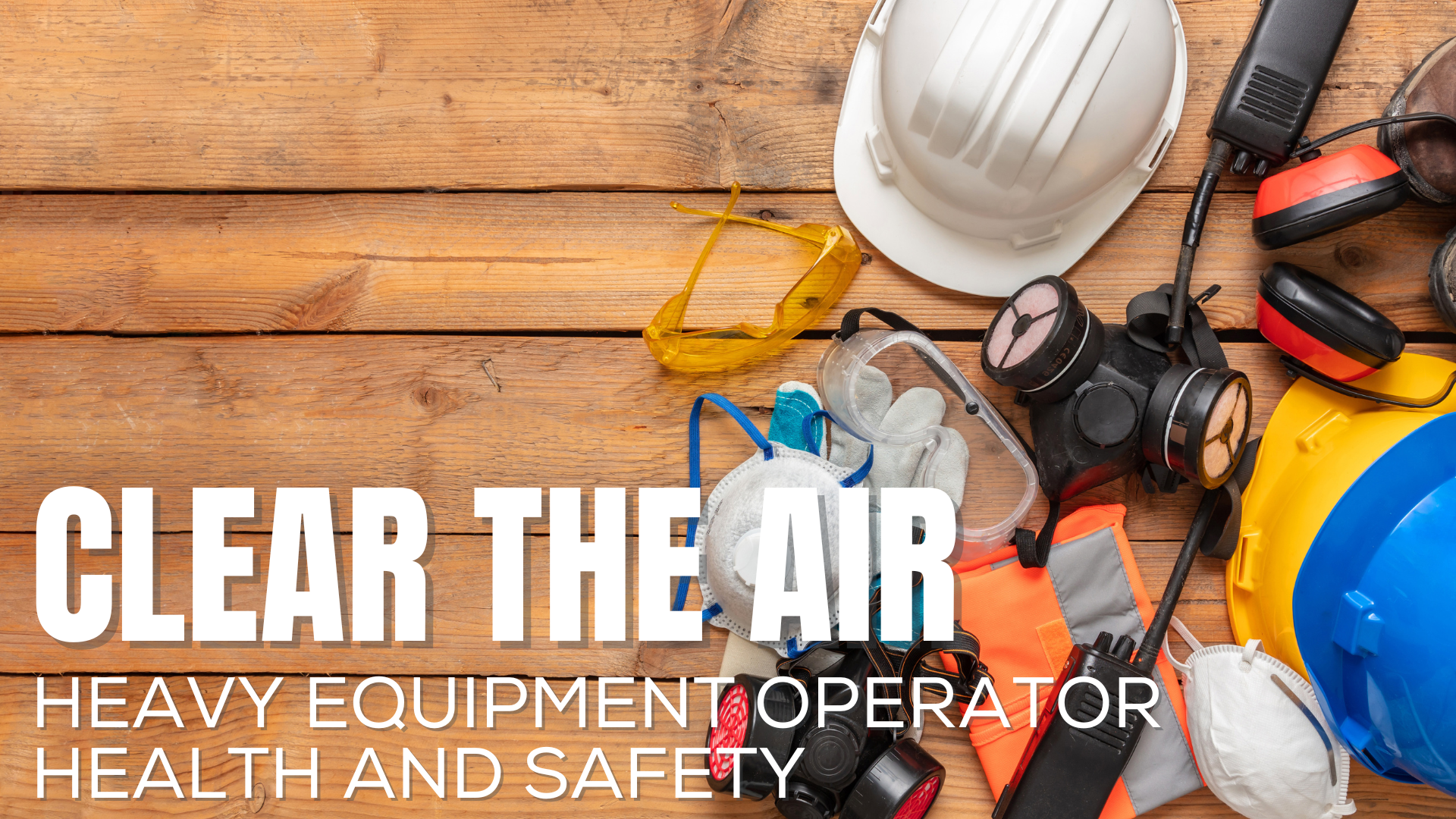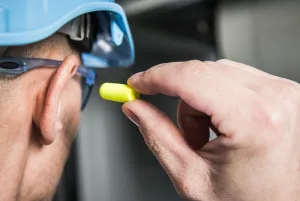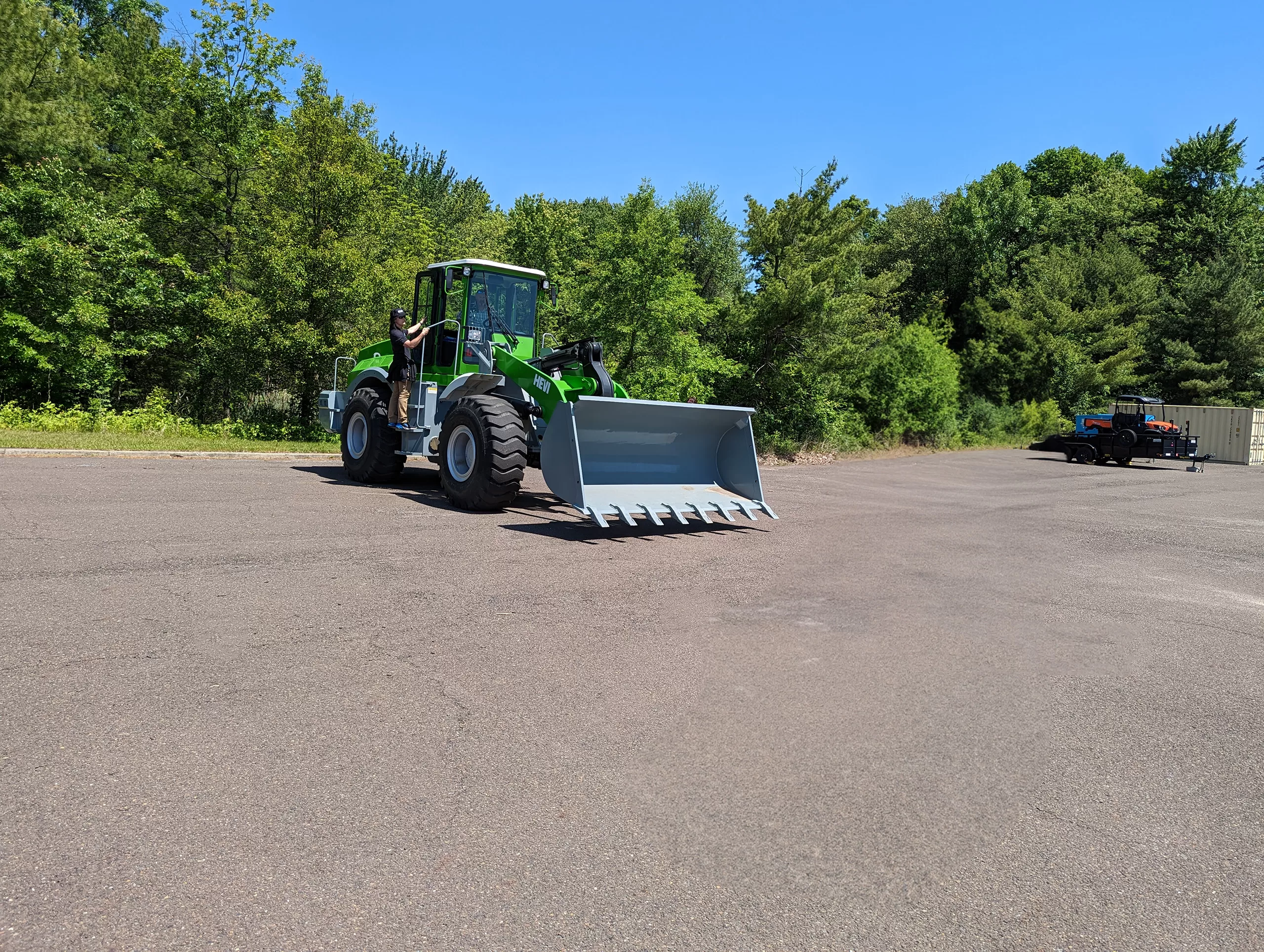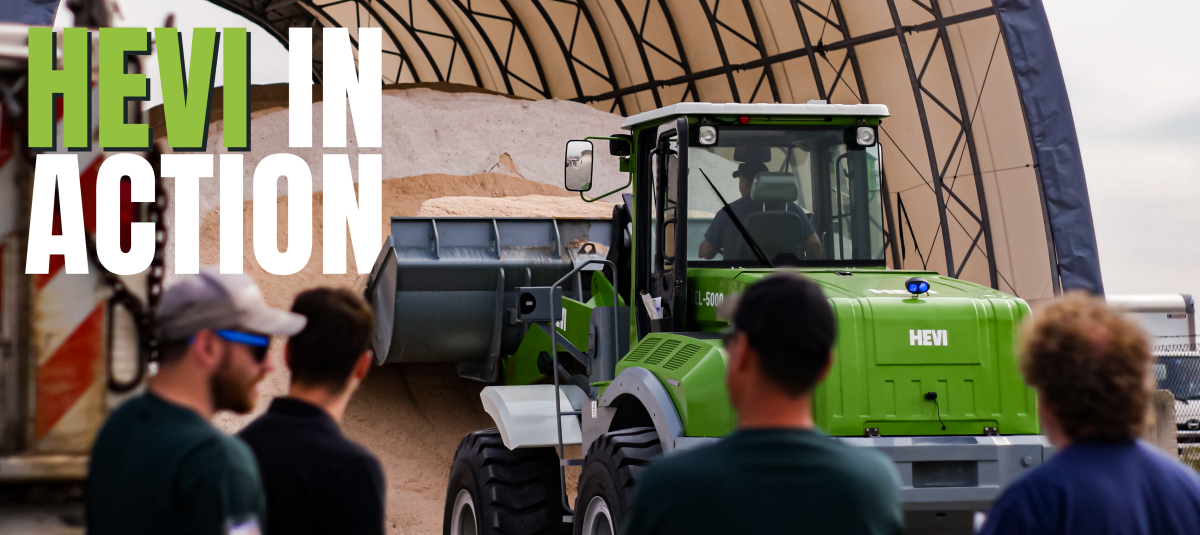Clear The Air: Heavy Equipment Operator Health and Safety
September 15 , 2022

There’s Something In The Air: DPM & Operator Health and Safety

Right now, diesel dominates the jobsite, whether in a crowded urban space or open farmland. Although the rough black smoke that pours out of mufflers can be an indication, we forget about the impact it can have on our health. Diesel exhaust is filled with what OSHA refers to as “Diesel Particulate Matter” (DPM):
“DPM is a component of diesel exhaust (DE) that includes soot particles made up primarily of carbon, ash, metallic abrasion particles, sulfates and silicates. Diesel soot particles have a solid core consisting of elemental carbon, with other substances attached to the surface, including organic carbon compounds known as aromatic hydrocarbons”
When it comes to heavy equipment, we’ve recently shown that even a relatively small diesel wheel loader can output an astonishing amount of carbon. With a whopping 91.52 TONS of carbon emitted every year from just one Caterpillar 906M, it’s no surprise that the Industrial sector is responsible for 24% of the United States’ total emissions. In the short term, workers on a diesel-based site can expect that they may experience a variety of symptoms, from severe throat and eye irritation to headaches or dizziness. In the long term, workers can expect an increased risk of several diseases, including but not limited to cardiovascular disease and lung cancer. Per OSHA, DPM must be restricted on worksites within permissible exposure limits. These are regulations owners and operators alike have had to dance around in order to keep jobsites up to code.
Fortunately, the global appetite for emissions reduction has skyrocketed. Way back in 2017, a study suggested that, “construction equipment emissions are a major concern to the construction personnel and general public” but also noted that “current construction equipment cannot be replaced by new low-emission models.” Now, five years later, HEVI has finally introduced a zero-operating emissions alternative. With no internal combustion, our all-electric equipment can help the Industrial sector manage the emissions issue in an affordable way.
Unfortunately for operators and on-site employees, DPM is not the only risk they take when they start their shift.
Do You Hear What I Hear: Noise Pollution

According to construcion industrial regulation 29 CFR, 1926 OSHA, industrial machinery generates roughly 90 decibles (dB) of sound – with heavy duty equipment like grinders generating as much as 100 dB. Noises that fall at or above 90 dB are classified as “hazardous.” This means they can have material effects on your hearing.
As anyone who’s spent a day in a bustling city will tell you, we can very quickly become adjusted to the cacophony of sounds that surround us at any given moment. Sadly, this does not mean we aren’t suffering hearing loss as a result. The same is true for operators of heavy equipment – so much so that 52% of noise-exposed construction workers report not wearing hearing protection. As such, noise has a huge impact on operator health and safety.
Unfortunately, this means that workers’ hearing is slowly degrading over time. According to the CDC, 16% of noise-exposed construction workers have hearing impairment in both ears. For this group, a devastating 25% have material hearing impairment – this means that ¼ of noise-exposed workers have a degree of hearing loss that impacts their everyday life. Workhorse equipment like wheel loaders and excavators generate hazardous noise all day. One simple way to protect operators is to reduce the noise that these machines make. Through electrification, HEVI equipment operates below hazardous noise levels, hitting 86 dB during startup and then getting so quiet, you won’t even know they’re running. Although one should never forgo hearing protection, electric equipment makes the task of protecting your workers much simpler.
Silence Isn’t Golden – It’s Green
These statistics are grim, though workplace safety standards have been improving outcomes for operators and employees every year. When HEVI set out to design all-electric heavy equipment, we were focused on the benefits we could bring to the environment by eliminating operating greenhouse gas emissions from the Industrial sector. What we’ve realized, however, is that sustainability goals and green tech go further than just preserving the planet for the future. They preserve the lives of people living right now. Our machines produce no operating emissions and operate at sound levels 60% lower than ICE alternatives. That makes for a quieter, emissions-free environment for everyone on site.
So when your jobsite kicks into gear with HEVI’s all-electric equipment, as your operators enjoy a quieter shift free from stinking black exhaust, you’ll realize, just as we did, that silence isn’t golden – it’s green.



